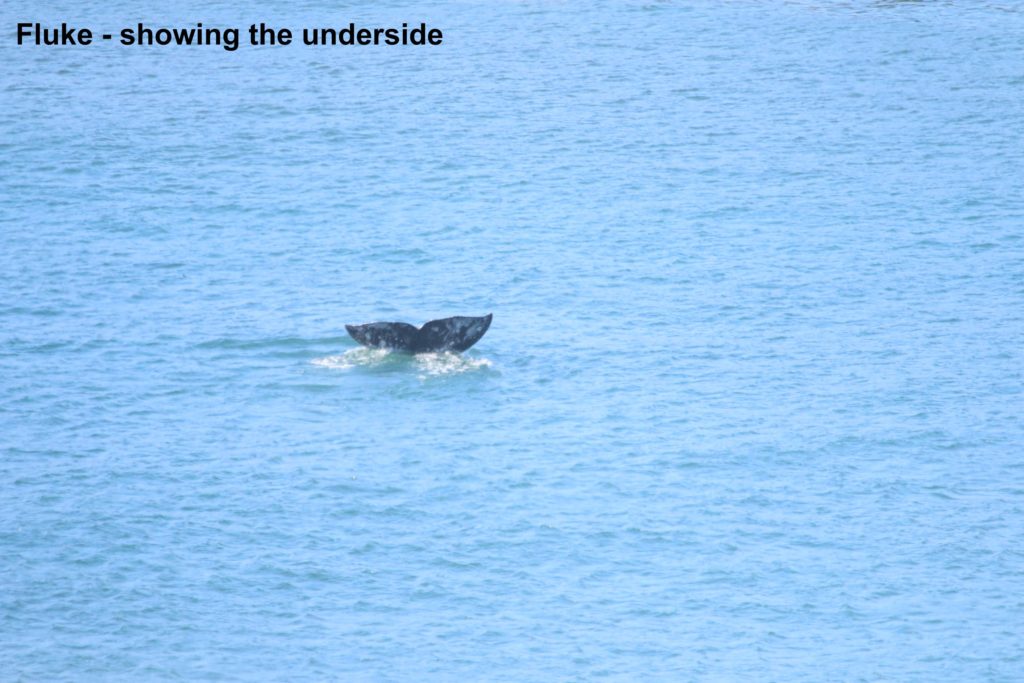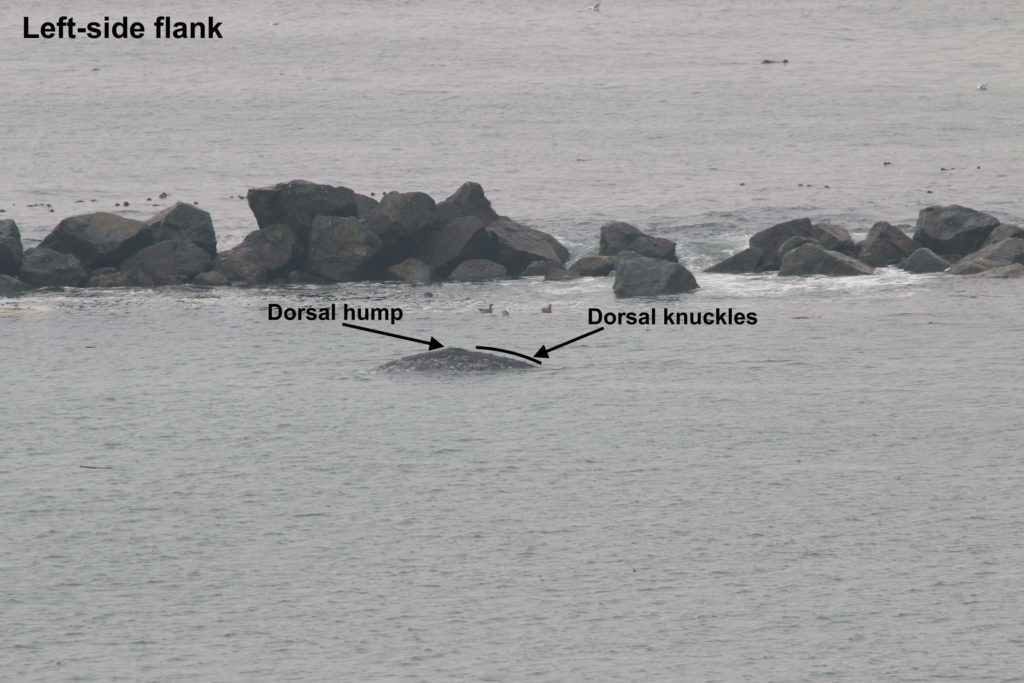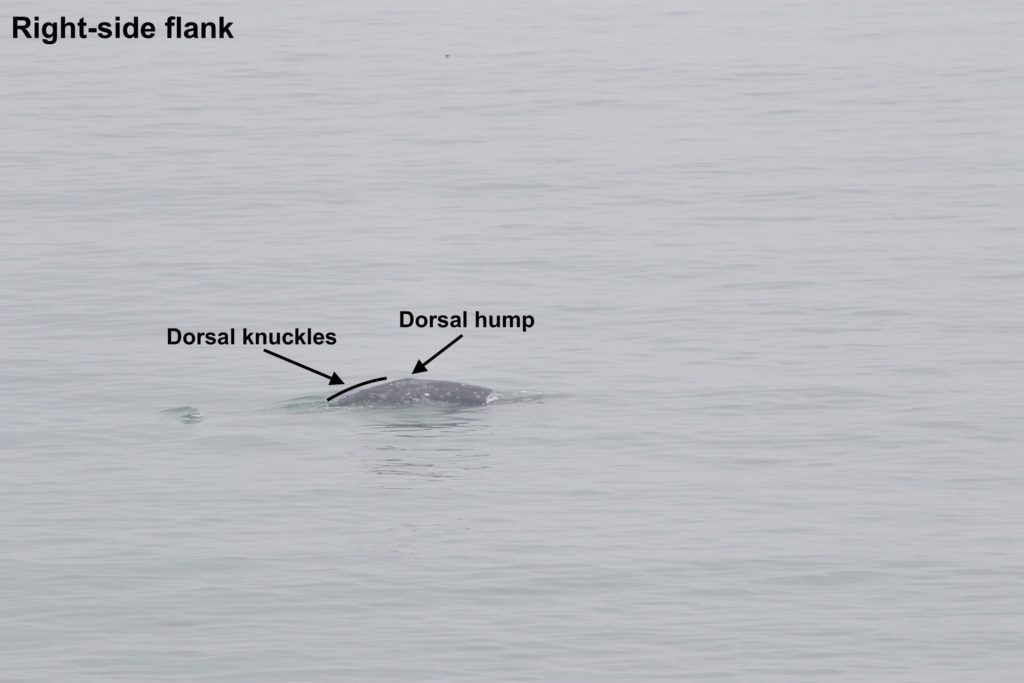Community science helps in our studies of gray whales in Oregon.
A big part of our work involves trying to figure out where whales go in the ocean. But we can’t look for whales everywhere, all the time. If you see a gray whale in Oregon and take high quality photos (please see our pointers below) we can identify the individual whale based on its markings and that becomes another great data point for us. We now know another time and place that whale occurred, which helps us piece together more about their life story (and we will tell you who you saw).
What makes a good photograph of a gray whale?
Gray whales are very easy to spot from the shore in Oregon, so it’s also relatively easy to take their photo. And, if you spot and photograph a gray whale while in a boat, we can use those photos too, but please do not approach it closer than 100 yards (that’s a rule, but we know that sometimes whales come close to your boat, so just shut your engine off and snap your photos!).
Gray whales can have subtle markings that we use to distinguish one whale from another. So high quality photos help us a lot. We use photos of the whales’ fluke and of its left and right-side flanks, particularly the area around its first dorsal knuckle.
All of the above photos were taken from shore.
Submit your gray whale photos here!
Submit your photos of gray whales in Oregon, along with basic sighting information below. If we can identify the whale in your photos and match it to our catalog our records, we get another data point and we will tell you who that whale is (name, age if known, sex is known).
Please include the very important location and time info!
It is very important for us to know where and when you saw the whale, so please include that information below. For location, you can just drop a pin on the map below.



